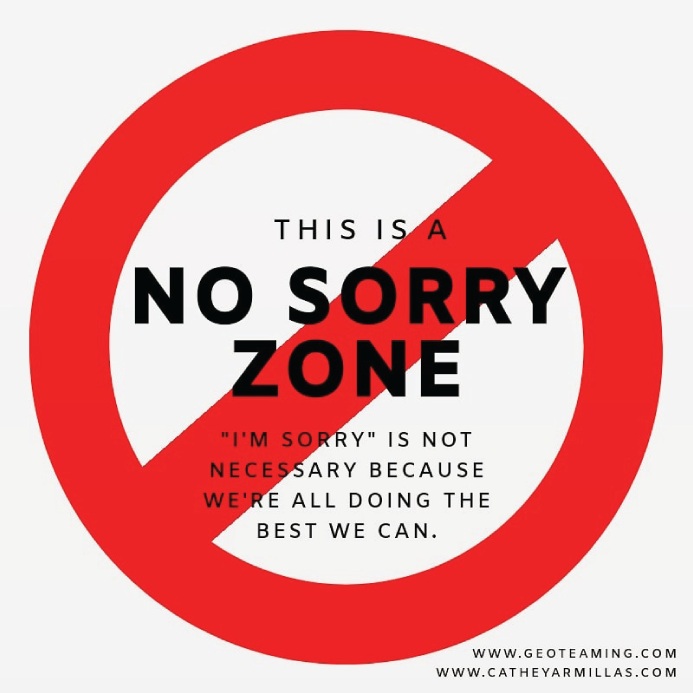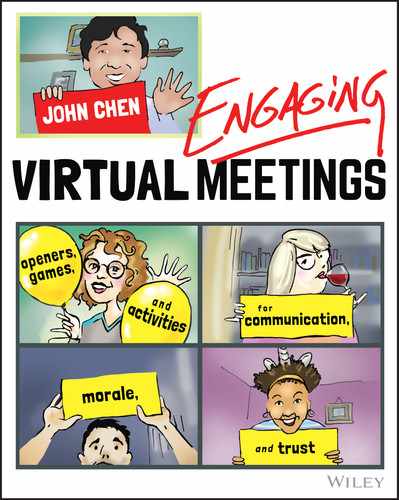3
Psychological Safety: How to Get the Quiet Attendees (and everyone else) to Engage
Google conducted groundbreaking research on what makes a team effective. Their research indicates that five factors are important for team and meeting performance. They are:

Let's focus on #1, psychological safety. Psychological safety is the invisible factor that helps your meeting become engaging. In every meeting, everything I do is to help create psychological safety for attendees I have never met and who have never met me.
Attendees do not engage if they do not feel psychologically safe. Your quiet attendees may be introverted, shy, challenged by being on camera, or for many other reasons. One way to know you are beginning to create psychological safety is that your quiet attendees take one new step. For instance, they contribute by audio. They choose to turn their camera on. They contribute to the meeting by chat. It is critical that the quiet attendee chooses to contribute, not that you called them out to do it. Attendee choice is a key factor for psychological safety. Most attendees like to have choice and be in control of their input.
One way to get your quiet attendees to engage more is to acknowledge or thank them. You do not need to draw unnecessary attention. For example, just a “Thank you (name) for contributing” will do. By acknowledging, there is significant research that says this reinforcement will get you more of the behavior you want.
To have a psychologically safe meeting, attendees need to be able to contribute. If you have an expressive and extroverted attendee who is taking all the airtime, you will need to moderate. A common complaint I hear is that one or two people are taking all the airtime during a meeting. To redirect, you can ask to hear from someone else. If necessary, ask the talkative attendee to choose someone else to hear from. If you have a very stubborn talkative attendee, you can say that their audio is having problems, so you're going to go on to the next person and come back. This is a technique another facilitator showed me from the early days of cell phones. The key is to not completely shut down the talkative attendee, just moderate the meeting so every attendee has a chance to engage.
The following are ways that you can create more psychological safety.
- Be organized: Attendees can sense if you planned and are organized for your meeting. If you're at ease, they're at ease.
- Be prepared: Being ready for anything gives the attendee the sense that they are taken care of. Knowing that they don't have to take care of other tasks, like muting people, means they can focus more attention to your meeting. Make sure to do research on your attendees. Be ready to demonstrate that you prepared for the meeting.
- Come in a ready state: I've always said that if you are nervous, your attendees will be nervous. If you are ready, your attendees will be ready. You can be technically prepared for a meeting, but if you show up in the wrong mental state, it can affect your entire meeting. How you show up to your meeting is critical to your attendees' psychological safety and your meeting's result. Even if you've had a challenging situation before your meeting, find a way, such as deep breathing, to collect yourself before you log in.
- Welcome: Welcome attendees as soon as they arrive so they know that this is a safe and welcoming environment. For instance, I presented to 40 attendees from Saudi Arabia. I made sure to say “Asalamu alaykom” (“hello” in Arabic) at the beginning of my presentation. While I do not speak fluent Arabic, they appreciated that I welcomed them in their own language.
- Acknowledge: Take steps to listen and acknowledge what attendees are saying. If you can't understand, ask the attendee to repeat. Learn the phrase, “So what I think I hear you say is …”
- Be open-minded: Even if you don't agree with an attendee, find a way to have an open viewpoint by acknowledging and not judging what they said. A quick way to disengage an attendee is to tell them they are wrong. Instead, as the host, find a way to be open to new ideas and ask questions to learn more. If the attendee's idea is not accepted, let the other attendees give that feedback.

- Allow and celebrate mistakes: When coronavirus hit in March 2020, it was the world's largest disruption. People were making mistakes all the time because everything was new. Finally, I got tired of people saying “I'm sorry.” I created a “No sorry zone.” I just let people know that it was okay, they don't have to say they're sorry around me because we're all doing the best we can. My friend, Cathey Armillas (http://catheyarmillas.com), made me this graphic, which I published on social media and got a lot of positive feedback.
- Engage all: Psychological safety is created when everyone is treated equally and fairly. I make sure to give every attendee the opportunity to talk no matter how they logged into the meeting. This prevents the meeting from being dominated by one or two attendees.
- Choice: Choice creates psychological safety because it puts attendees in control. During check-ins or openers, I allow people to participate when they're ready. This small distinction is a big help as attendees realize that I will wait and they are in control. This means that the host needs to be comfortable with silence at the right times. The other way to create choice is to present and give multiple choices for attendees to engage. For instance, I allow attendees to say “Pass” if they don't want to contribute. I make sure to present quickly for extroverts and slowly for introverts at different times.
- Make a conscious choice about recording: For most meetings, turning off live streaming and recording will create more psychological safety, as people know that they can say more—almost anything, if there is also a rule of confidentiality. If you detect there is a problem with psychological safety and you're recording, consider turning recording off and altering the discussion to talk about the real problem. In another meeting, a professional program manager encountered two teams who were fighting with each other. She turned on the record button and the announcement that the meeting was being recorded played for every attendee. The two teams reconsidered their words and the meeting got back on track. Decide how recording and not recording can benefit your meeting.
- Authenticity: There's nothing you can do to create authenticity. You need to be authentic. You need to be comfortable with yourself. You need to be comfortable hosting your meeting. You need to believe what you're saying and doing. You need to be telling your truth. This authenticity of allowing yourself to be yourself gives others psychological safety to show up and be themselves.
- Believe: If you believe you can create psychological safety and make a connection with someone halfway around the world, you can. I can tell you that I've been able to form friendships and do great work virtually because I believe it's possible.
When you have psychological safety, you should see positive results in your virtual meetings. Attendees begin to engage in ways that benefit your meeting more. Attendees start to exhibit positive behaviors that they didn't do before. Attendees are excited to come back. Attendees share personal stories that help deepen the relationships of the attendees with each other. Attendees have the courage to do things that are uncomfortable for them, like lead a presentation. Attendees create solutions that everyone follows up on when there is psychological safety. There is value for creating psychological safety and it's worth learning how to create it in a new arena such as a virtual meeting.
Zoe Euster, a project manager, applied psychological safety to her open mic virtual meeting. This was a meeting where people who don't usually perform, perform poetry, music, or whatever they'd like. It takes courage, as public speaking is the number-one fear that most people have. Read her results as she applies psychological safety to her virtual meeting:
When the coronavirus hit, I had very little experience with online events. In March 2020, I met John and was introduced to his online workshops. John taught me a lot in the first two months in training as a producer for the Engaging Virtual Meeting Workshops. I eagerly applied all I learned to my own event, a Zoom literary open mic called Words of Hope. Like his meetings, we started with intros and check-ins. The 15 attendees started to connect right away.
The spirit of psychological safety rang true through the whole event. Some of the pieces people read were very vulnerable. The readers were acknowledged and celebrated for their bravery. One person who had not written anything shared some thoughts. She had collected a list from her friends on social media about what hope meant to them. As she read, the audience engaged through nodding and deep listening.
Even though many of the folks present had never met before, a feeling of community grew. Everyone engaged at least once, whether they shared their own writing or spoke up to praise the work of someone else. The meeting had air traffic control. People didn't talk over each other. It went smoothly because people really listened to each other and reacted accordingly.
Using Chat helped build the sense of community. People messaged their socials, email address, and examples of their work for folks to read. I liked how they connected during the event in Chat but remained engaged with the performances. As host, I could moderate the chat during the performances.
I spoke with a good friend who has been to several of my live performances over the years. She said that the online open mic was one of the best events of mine that she has been to. Much of that is thanks to what I have learned from John about creating online spaces where people feel comfortable and engaged. People at the event liked it so much they want to do more online open mics!
Source: Zoe Euster, Project Manager (linkedin.com/in/zoeeuster)
